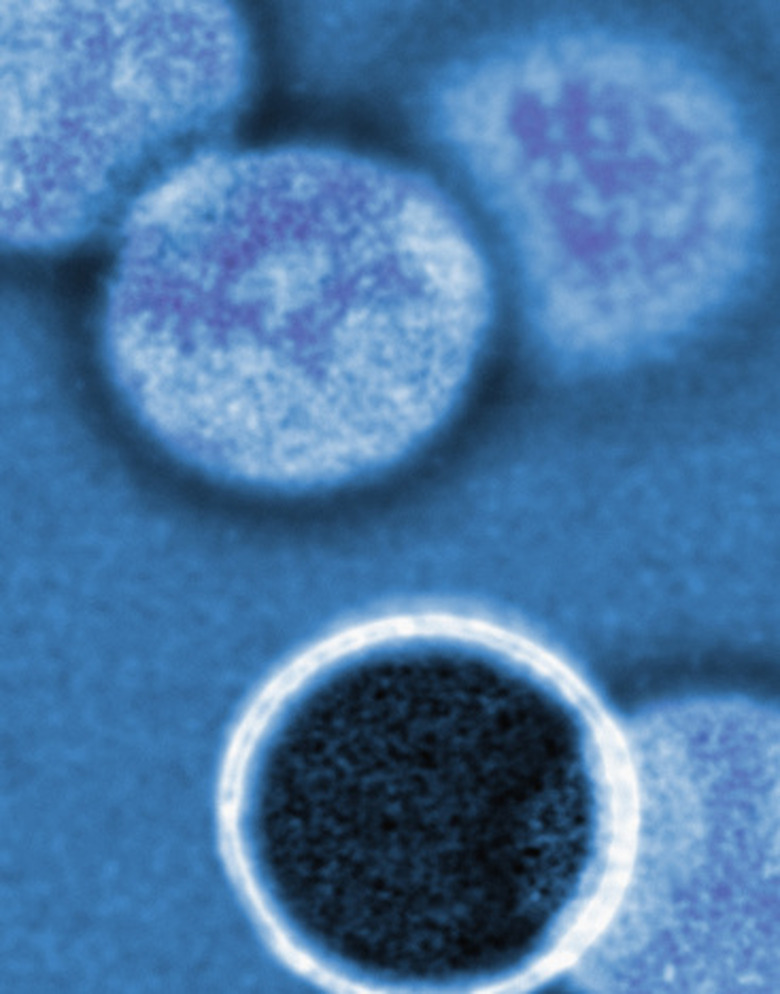Fun Science Experiments On Cells
Cell experiments are fascinating because most people don't often get to see cells at work. Conduct fun experiments using plant cells that demonstrate osmosis and how vital water is to cell growth. Using bacteria, we can demonstrate how unicellular organisms reproduce differently than multi-celled organisms like plants and animals.
Plasmolysis
Plasmolysis
Peel a layer of skin from an onion. Place a drop of water on a slide and place the onion tissue in the water. Add another drop of water and a drop of iodine over the onion and cover with a glass slip. Examine under a microscope. Add 5 grams of salt to 100 milliliters of water. Place few drops of the solution to one side of the microscope slide. It will mix with the fluid on the onion. Observe the differences in the tissue. Repeat with 10 grams of salt mixed with the same amount of water on a new slide. The salt causes the protoplasm in the cell to shrink in a process called plasmolysis, creating clear differences in the slides.
Shrinking Cells
Shrinking Cells
Fill two glasses half full with warm water. Dissolve three tablespoons of salt into one of the glasses. Break a carrot in half and place the cut end of each piece into each glass. Leave overnight and then check the size of the carrots. One will shrink and the other will bloat. Plant and animal cells are like tiny water balloons. The cells balance the saltiness by releasing cell water through the cell wall to the salt water surrounding them. The cell lost water it needs to live and it collapsed and died. The carrot in plain water absorbed the water into the cells and expanded.
Osmosis
Osmosis
Fill three bowls with room temperature water. Add salt to one bowl, sugar to the second and nothing to the third. Place one slice from the center of a potato in each bowl. Remove the slices after 30 minutes to examine them. The salt water slice will become soft and flexible. The sugar water slice will be less flexible. The plain water slice will be more rigid. Cells allow water to pass in and out, but because the cell water tends to move toward dissolved chemicals, in the salt water it moved from the inside of the potato's cells to the outside causing the potato's cells to collapse. The same happened with the sugar water, but because potato cells contain more sugar than salt, the potato didn't lose as much water. In plain water slice, water moved from the outside in, causing the cells to swell and become stiff.
Growing Bacteria
Growing Bacteria
Prepare two Petri dishes of agar, which can be purchased at grocery stores or from scientific supply companies as agar plates. Swab a surface in your home with a cotton swab and use a second swab under your fingernails or between your toes. Rub each swab over the agar in each dish and seal with the lids. Place the dishes in a warm area for two to three days, observing changes each day. The bacteria you collected should grow steadily because of the ideal conditions given with agar and warm temperatures, showing visible results in a short time. Observe the differences between the bacteria in the dish containing a swab of a surface in your home and the swab from your body. Wrap the dishes in newspaper and throw them in the garbage when finished. Do not open the lids.
Cite This Article
MLA
Miller, Renee. "Fun Science Experiments On Cells" sciencing.com, https://www.sciencing.com/fun-science-experiments-cells-8066655/. 24 April 2017.
APA
Miller, Renee. (2017, April 24). Fun Science Experiments On Cells. sciencing.com. Retrieved from https://www.sciencing.com/fun-science-experiments-cells-8066655/
Chicago
Miller, Renee. Fun Science Experiments On Cells last modified August 30, 2022. https://www.sciencing.com/fun-science-experiments-cells-8066655/
